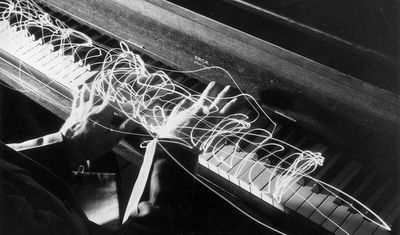via nature.com
Whether tapping a foot to samba or weeping at a ballad, the human response to music seems almost instinctual. Yet few can articulate how music works. How do strings of sounds trigger emotion, inspire ideas, even define identities?
Cognitive scientists, anthropologists, biologists and musicologists have all taken a crack at that question, and it is into this line that Adam Ockelford steps. Comparing Notes draws on his experience as a composer, pianist, music researcher and, most notably, a music educator working for decades with children who have visual impairments or are on the autistic spectrum, many with extraordinary musical abilities. Through this “prism of the overtly remarkable”, Ockelford seeks to shed light on music perception and cognition in all of us. Existing models based on neurotypical children could overlook larger truths about the human capacity to learn and make sense of music he contends.

George Pickow/Three Lions/Getty
How the human brain processes music remains a mystery.
Some of the children described in Comparing Notes might (for a range of reasons) have trouble tying their shoelaces or carrying on a basic conversation. Yet before they hit double digits in age, they can hear a complex composition for the first time and immediately play it on the piano, their fingers flying to the correct notes. This skill, Ockelford reminds us, eludes many adults with whom he studied at London’s Royal Academy of Music. Weaving together the strands that let these children perform such stunning feats, Ockelford constructs an argument for rethinking conventional wisdom on music education.
He positions absolute pitch (AP) as central to these abilities to improvise, listen and play. Only 1 in 10,000 neurotypical people in the West have AP — the ability to effortlessly, without context, name the note sounded by a violin or a vacuum cleaner (“That’s an F-sharp!”). Among those on the autism spectrum, the number rises to 8%, roughly 1 in 13. For people born blind or who lost their sight early in infancy, it is 45%. AP, Ockelford argues, enables children to sound out and tinker with familiar tunes; that experimentation leads to a deep grasp of musical structure.

